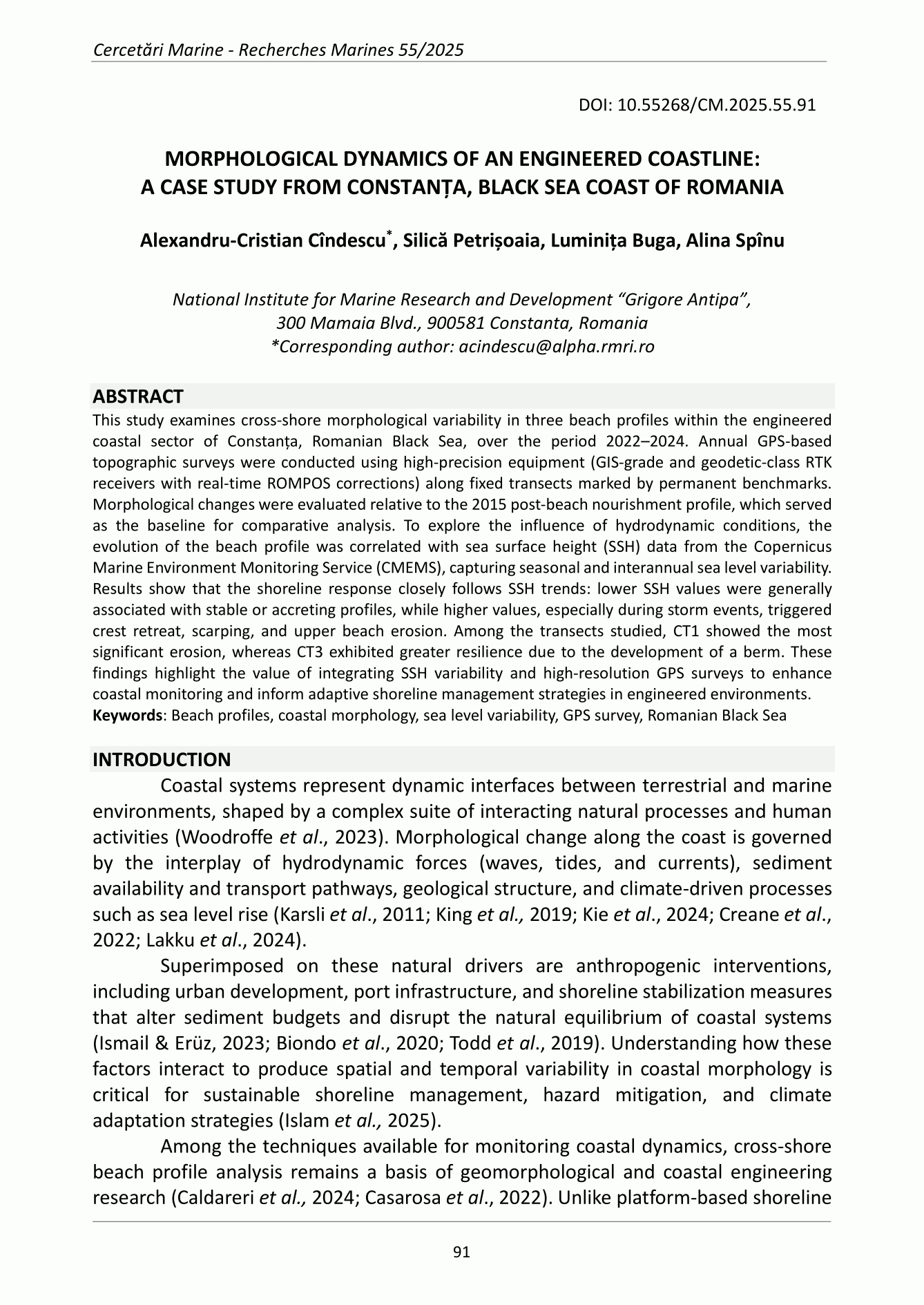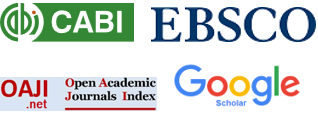MORPHOLOGICAL DYNAMICS OF AN ENGINEERED COASTLINE: A CASE STUDY FROM CONSTANȚA, BLACK SEA COAST OF ROMANIA
DOI:
https://doi.org/10.55268/CM.2025.55.91Keywords:
Beach profiles, oastal morphology, sea level variability, GPS survey, Romanian Black SeaAbstract
This study examines cross-shore morphological variability in three beach profiles within the engineered
coastal sector of Constanța, Romanian Black Sea, over the period 2022–2024. Annual GPS-based
topographic surveys were conducted using high-precision equipment (GIS-grade and geodetic-class RTK
receivers with real-time ROMPOS corrections) along fixed transects marked by permanent benchmarks.
Morphological changes were evaluated relative to the 2015 post-beach nourishment profile, which served
as the baseline for comparative analysis. To explore the influence of hydrodynamic conditions, the
evolution of the beach profile was correlated with sea surface height (SSH) data from the Copernicus
Marine Environment Monitoring Service (CMEMS), capturing seasonal and interannual sea level variability.
Results show that the shoreline response closely follows SSH trends: lower SSH values were generally
associated with stable or accreting profiles, while higher values, especially during storm events, triggered
crest retreat, scarping, and upper beach erosion. Among the transects studied, CT1 showed the most
significant erosion, whereas CT3 exhibited greater resilience due to the development of a berm. These
findings highlight the value of integrating SSH variability and high-resolution GPS surveys to enhance
coastal monitoring and inform adaptive shoreline management strategies in engineered environments.

Downloads
Published
How to Cite
Issue
Section
License

This work is licensed under a Creative Commons Attribution-NonCommercial-NoDerivatives 4.0 International License.
This is an open access journal, which means that all content is freely available without charge to the user or his/her institution. Users are allowed to read, download, copy, distribute, print, search, or link to the full texts of the articles, or use them for any other lawful purpose, without asking prior permission from the publisher or the author. This is in accordance with the BOAI definition of open access.






